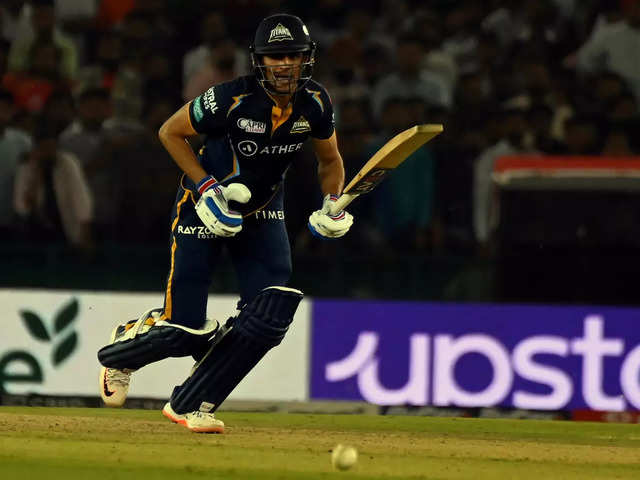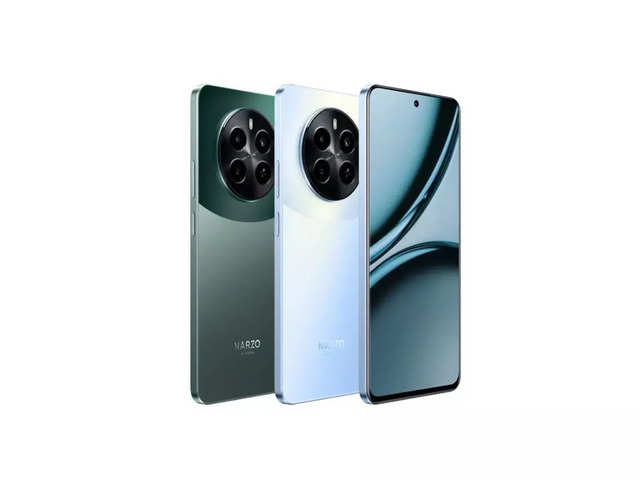
Influencer marketing experts on what does the future hold and how is the ecosystem shaping upUnsplash
We take a closer look at the year gone by and what lies ahead
Dec 14, 2021, 17:04 IST
brands
Influencer Marketing: Trends to watch out for in 2022
- As we enter a brand new year, we want to crystal gaze into what the year holds for us.
- The global pandemic has spawned strong growth in influencer marketing and creators have cemented their position boosting consumer trust in 2022.
- In our first year-ender, we take a closer look at the year gone by, speak to influencer marketing experts to understand what does the future hold and how is the ecosystem shaping up.
- They also shared with us a few key trends and opportunities that the industry will bring forth as we move forward in 2022.
Bolstered by prolonged stay-at-home periods, consumers also steered away from pictures and text and started consuming more videos than ever before. According to Bain and Company, the online video user base in India has increased to more than 350 million people, growing 24% in the last three years. Today, Indian smartphone users spend about 4.8 hours on their devices daily, of which a staggering one hour on average is spent consuming videos, said the report.
So, as video consumption scales and attention span reduces every day, influencer marketing offers quick turnaround time and personalisation. Another key factor that attracted brands to this medium is the bond of trust and authenticity that creators share with their fans, giving brands an opportunity to reach out to a niche audience. As a result, the influencer marketing industry has gone through a severe transformation in a short time, becoming a mainstream marketing vehicle.
Brands have started looking for agencies that can provide them with interesting campaign ideas rather than just a list of influencers and expected reach. They are more involved in their marketing campaigns and have started exploring creative ideas collectively with the influencers to create engaging content. So, in 2021, we saw brands moving away from ‘one-time associations’ for single posts to actually collaborating with influencers for long-time deals.
GroupM and INCA’s study conducted earlier this year also proves how significant influencer marketing is to a marketer today. It said that influencer marketing has become a top priority for marketers this year, as every other leader indicated a budget growth of more than 25% in 2021. INCA’s report further went on to predict that the Influencer Marketing industry is poised to grow at a CAGR of 25% for the next decade, reaching a size of Rs 2200 crore in 2025. As per the report, celebrities corner only 27% of the marketing dollars while a bulk of 73% are taken by digital influencers.
Keeping in mind how 2020 and its aftermath in 2021 revolutionised the digital industry, we reached out to a few influencer marketing agencies to understand what does the future hold and how is the ecosystem shaping up. Here is what they said:
Neel Gogia, Co-founder of IPLIX Media:
The upcoming year is bringing a plethora of opportunities for existing as well as aspiring influencers and creators. The first and foremost are long-term partnerships. With each passing day, more and more brands are realizing that ROI delivered by influencer marketing is unparalleled. Therefore, they are increasingly investing in influencer marketing, and especially in long-term partnerships. Long-term partnerships help them build advocates and ultimately, increase trust amongst the audience. Apart from that, the regionalization of content will increasingly be gaining momentum in the upcoming years. In fact, global brands and platforms are already experimenting with it. Recently, LinkedIn launched its regional version after almost every major global networking app available in the country across Facebook, Twitter and Clubhouse have already introduced it to support the multiple Indian languages. In this wave of regionalization, the local languages that are gaining popularity are Telugu, Marathi, Bengali, Punjabi, Malayalam, etc.
Dharika Merchant, COO, WORD and Alchemy Group:
The influencer marketing industry in 2022 will see a huge rise in the demand for micro influencers. Micro influencers' share in the total industry increased drastically last year due to brands favouring them owing to their higher engagement rates & affordability. The industry is expected to shift to a more data-driven approach which will become the primary reason for the rise in demand for micro-influencers. Brands are now willing to work on branded content with micro influencers due to favourable data and better insights. It also leads to an effortless long-term relationship between the brand and the influencer thereby ensuring an always-on marketing approach. This always-on influencer marketing approach portrays brand loyalty from an influencer point of view and adds onto credibility of the brand and better brand recall.
Without a doubt, focus on micro influencers will be one of the leading trends for the industry in the coming year and we’re excited to see how this changes the face of branded content.
Pranav Panpalia, founder, OpraahFx:
‘Live streaming’ is all set to emerge as one of the widely accepted and used influencer marketing tools in the coming year. Live-eCommerce as a concept was started in China last year during the pandemic and got popularized amongst other nations. Live-eCommerce is a great way to connect with the right set of target audiences and turn them into ‘customers’ of the brand the influencers are vouching for. This is one of the best ways for brands who are focusing on ‘ROI’ driven campaigns and not on awareness or brand-building. In India, with many start-ups and MSME brands now focusing on performance-driven influencer marketing campaigns, the concept of live-eCommerce will be practiced and this shall disrupt the influencer marketing industry. Brands promoting highly accessible and affordable products and services are more likely to make use of this new concept. Alongside, live streaming is known for enabling better connections between creators, brands, and consumers as it is a more authentic and real-time content piece. It also provides an opportunity for consumers to interact with their favorite creators, thereby there is a larger scope for personalisation, feedback, and results-driven conversations. Currently, the live-streaming concept is highly dominated by gamers, and this trend will soon see a shift. The live-stream feature provides an equal opportunity and benefits to influencers and content creators of all kinds if used strategically and creatively. For eg: Content creator, Viya from China live-streams about beauty, cosmetics, real estate, cars, and rockets; and is gaining immense out of such brand deals. Likewise, we too are soon to witness such a trend in India.
Apaksh Gupta, CEO and Founder, One Impression:
While there are going to be plenty of emerging trends that we are expecting to take over the influencer marketing economy in 2022, one particular trend that is going to stand out is the mainstreaming of the metaverse. The way the world of content and social media is evolving, we can easily assume now that the metaverse is here. While the pandemic forced brands to jump on the digital marketing train, newer technological innovation and integration of various platforms to build a virtual ecosystem is bringing the dream of Metaverse closer every day. 2022 is going to witness a lot of investments from brands into mainstreaming the metaverse. We have already seen in 2021 that bigger brands like Nike and Verizon are already initiating their strategies to get a head start in this league from their competitors. Gucci has also launched its limited collection for Roblox letting players customise their avatars in Gucci products. In 2022, we will be witnessing an increase in these numbers of brands who will be deploying technologies like AR/VR with influencers and content creators at the centre of them to promote their products and services.
Rohan Tyagi, VP Strategy and Operations, India - Triller:
The advent of technologies like NFTs, Crypto has opened up new engagement and revenue channels for brands. In fact, there is great affinity toward it among GenZ and millennial buyers. Through NFTs, brands can disrupt their markets with new strategies to raise awareness, develop new consumer journeys and increase customer value and loyalty. However, In the decentralized world of Web3, the power has shifted back to creators, and brands looking to leverage technologies like NFTs know that they cant simply buy into the space. Community interest today is driven by creators as a result there will be an uptick in brands partnering with influencers to leverage the opportunities afforded by NFTs.
While influencer marketing is a fairly young industry with Metaverse becoming mainstream there is a huge likelihood of it taking off quickly and becoming a multibillion-dollar economy in the virtual world. In fact, this may happen much quicker than we think.
Aayush Tiwari, VP - Talent Management & Music Business, Monk Entertainment:
One pretty evident trend is the dominance of short video content. We’ve noticed a wave of crisp crunchable 15-30 seconder bites taking the internet by storm in 2021 already, bound to multiply in the coming years. Factors that act as a catalyst are low entry barrier, easy to make, large-scale consumption. What drives the short video ecosystem is the ability of it getting recreated under the banner of ‘trends.’ Every week, there are hypothetically ten new trends which garner lakhs of videos lifting the consumption and UGC levels to higher levels. Dominant social media platforms like Instagram, YouTube launched their verticals, and new players like MOJ, TakaTak, Chingari entered the game encouraging regional tiers to showcase their talent. Even Netflix launched a short vertical that features the best scenes from their series, which people are binge-ing on the go.
Vaibhav Odhekar, Managing director India & Middle East, AnyMind Group:
Influencer marketing has seen few major changes from the consumer approach towards the whole marketing and influencer segment and monetization of platforms. With the rising social media consumption and engagement, D2C brands across segments have moved towards influencers marketing. As per 'State of Influencer in Asia 2021' report by Antag, the most popular are Art & Entertainment, Food & Beverage and Fashion & Beauty while Finance, health & wellness are also attractive eyeballs and set to become trendsetting in 2022.
One of the trends that stood out this year was Influencers creating and launching their own brands, driven by their expertise in a certain field, passion or life experience. Along with Direct-to-consumer and e-commerce, Consumer behavior shifts driven by the pandemic have accelerated trends. We've also noticed a trend of rising social commerce which will stay. Platforms like Facebook, Instagram, YouTube and Twitter have already made such features available in some parts of the world. The report also found out that Youtube is the most used social media platform in India. As we move towards 2022, more trends will see a spike and the ongoing trends will keep growing with the brands' demand.
Sagar Pushp, Co-founder and CEO, ClanConnect:
Two major trends are emerging in the influencer marketing sector and will likely dominate in 2022. Firstly, the creator economy will move towards a subscription-led model wherein true fans will be able to pay a sum of money to access exclusive influencer content. Such premium content will not be available on public platforms like Instagram and YouTube. Secondly, the use of NFTs is going to skyrocket over the next year. With NFTs, users can assume ownership of content such as images, videos, or sound clips, unlocking more revenue opportunities for creators.
Pulkit Agrawal, Co-Founder & CEO, Trell:
Two words: Social Commerce. While the pandemic has given a massive push to India’s creator economy, the industry will thrive in 2022, with newer shopping and engagement models being adopted across the ecosystem. India’s GenZ and millennial shoppers are now harder to reach through traditional media channels and prefer social media networks to make purchase decisions. Hence, brands now want to integrate social and commerce to drive higher awareness, consideration, and sales. Further, Vertical videos are bound to take the centre stage in the coming year, which means long-form or episodic content will create opportunities for influencers to integrate brands into their content with the help of data-driven insights- brands and influencers will churn more personalized content for their followers’
The rise of social commerce in India will also give a fillip to digital-first brands while opening up newer avenues for influencers to monetize from brand collaborations, making it a full-time profession. With this, the industry is all set to create transforming shopping experiences and become more interactive, immersive, and entertaining. Live commerce is one of such innovations where an influencer demonstrates product usability in a live video setting, driving higher visibility, excitement, and loyalty for consumers.
Gautam Madhavan, CEO, Mad Influence:
Short Video and Live Stream will dominate in the influencer marketing industry. Consumers are becoming restless in watching long format videos - hence they want to consume on-the-go type of content. Original Content will be one of the key factors driving this. Content Quality and content authenticity is something consumers will be wanting.
INSIDER INTELLIGENCE REPORTS






